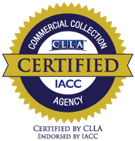
When reaching out to someone for the first time or following up on a previous message, setting a friendly and positive tone is important. Whether it's a sales email or, in our case, following up about an unpaid invoice, your initial email may dictate how the rest of the transaction will go.
Learn how to effectively follow up with others in a polite and professional manner with these subtle techniques.
Set the Tone with a Friendly Initial Message
While some people may want you to get right to the point, others appreciate a friendly start to an email. Begin your message with a warm greeting and express your appreciation for their time. You can also mention something specific that you enjoyed or found interesting in your previous conversation. By starting off on a friendly note, you're more likely to receive a positive response.
It's also important to keep your message concise. Avoid overwhelming the recipient with a lengthy email or message. Instead, focus on the key purpose of your follow-up and clearly communicate your intentions. This will show respect for their time and make it easier for them to respond.
Choose the Right Timing for Your Follow-Up
Timing is crucial when it comes to following up with others. You want to strike a balance between being prompt and not appearing too pushy. After sending your initial message, give the recipient reasonable time to respond before following up. This can vary depending on the context, but a general guideline is to wait at least a few days.
You can send a gentle reminder if you haven't received a response after the initial follow-up. However, it's important to avoid bombarding the recipient with multiple messages in a short period of time. Space out your follow-ups and be patient. Remember, everyone is busy and may need time to get back to you.
Craft Gentle Reminders without Being Pushy
It's a true art to strike the right balance between persistence and respect. Start by acknowledging that the recipient may be busy or may have missed your previous message. Politely remind them of your previous communication and restate your request or question.
You can also offer additional assistance or provide any necessary information that may help them respond more easily. However, avoid using language that puts pressure on the recipient or implies that they have done something wrong by not responding. Maintain a polite and understanding tone throughout your reminder.
Handling Non-Responsive Contacts with Grace
Not everyone will respond to your follow-up messages, and it's important to handle non-responsive contacts with grace. Avoid taking it personally or becoming frustrated. It's easy to start using more demanding or aggressive phrases that may come across as pushy or rude - especially when considering that the contact's business owes you money.
If you're still trying to communicate with these contacts before escalating to a debt collection agency, make sure to maintain a friendly and professional demeanor. Avoid any negative or accusatory language, and document all attempts to resolve their account. This documentation is invaluable for the professional collections specialists and/or legal team taking on the case.
Establishing a warm and positive tone when reaching out to someone for the first time or following up on a previous message is essential. A follow-up is necessary, especially regarding an outstanding invoice, and the initial email sets the stage for how the interaction will unfold.





